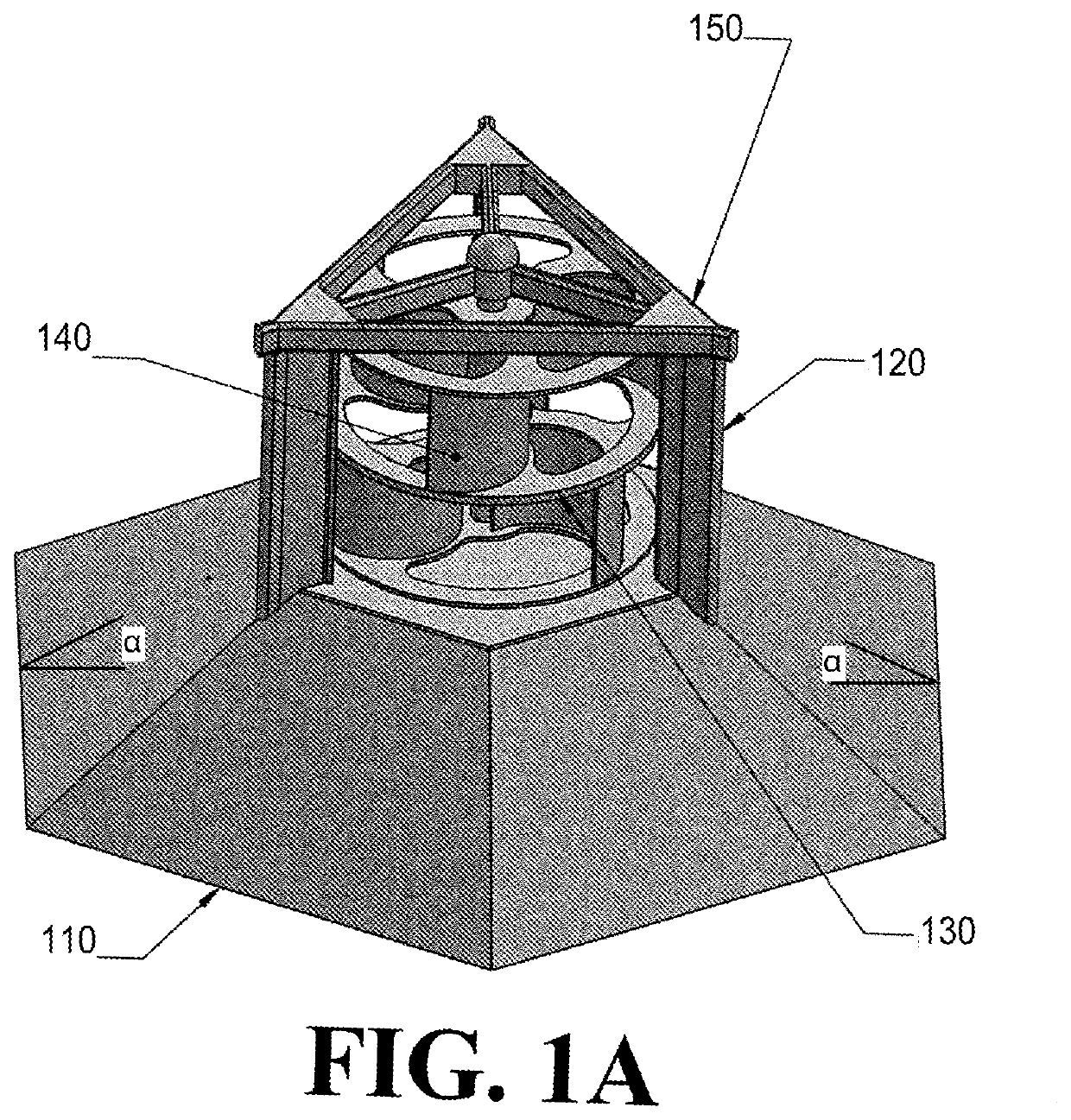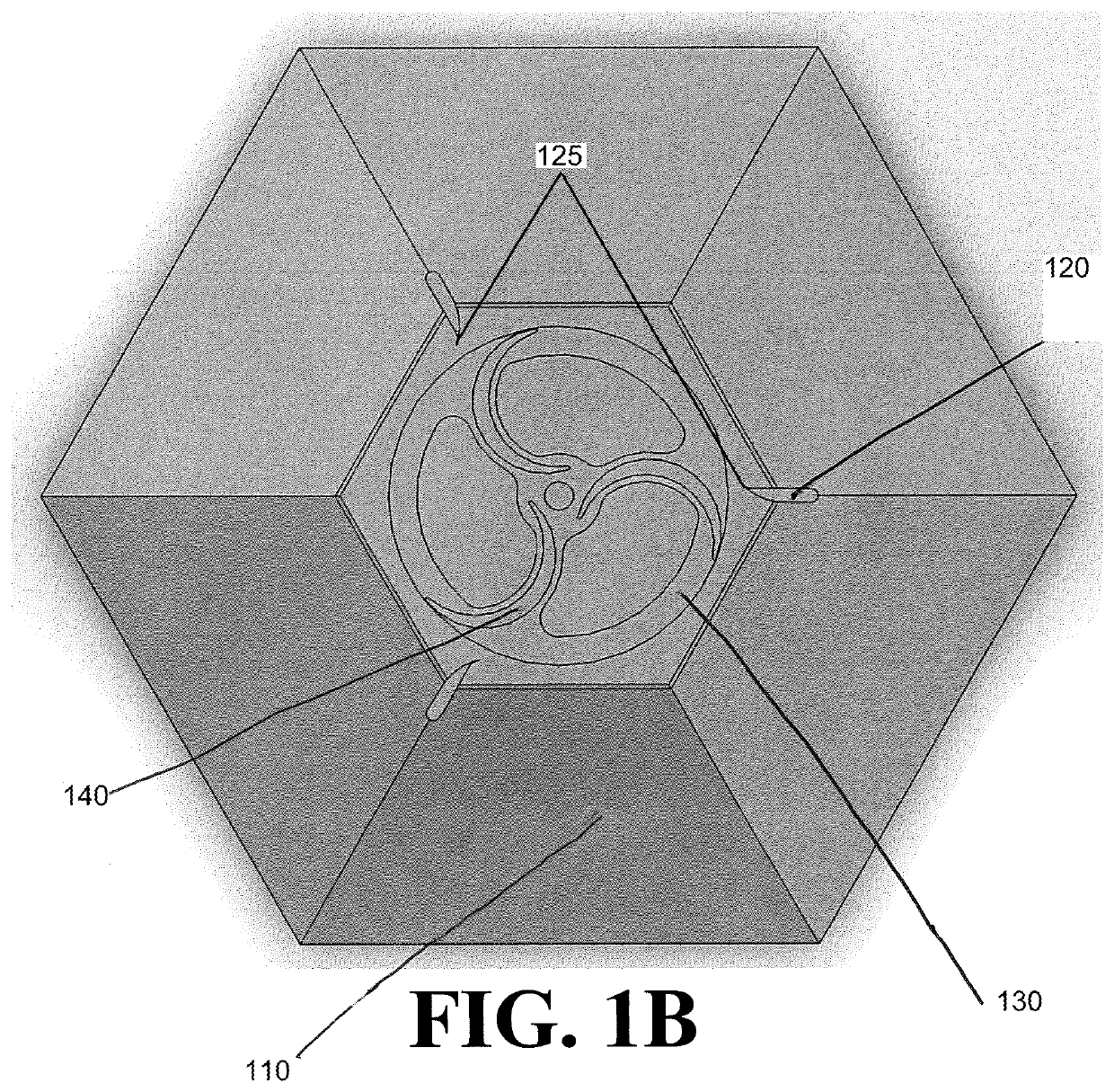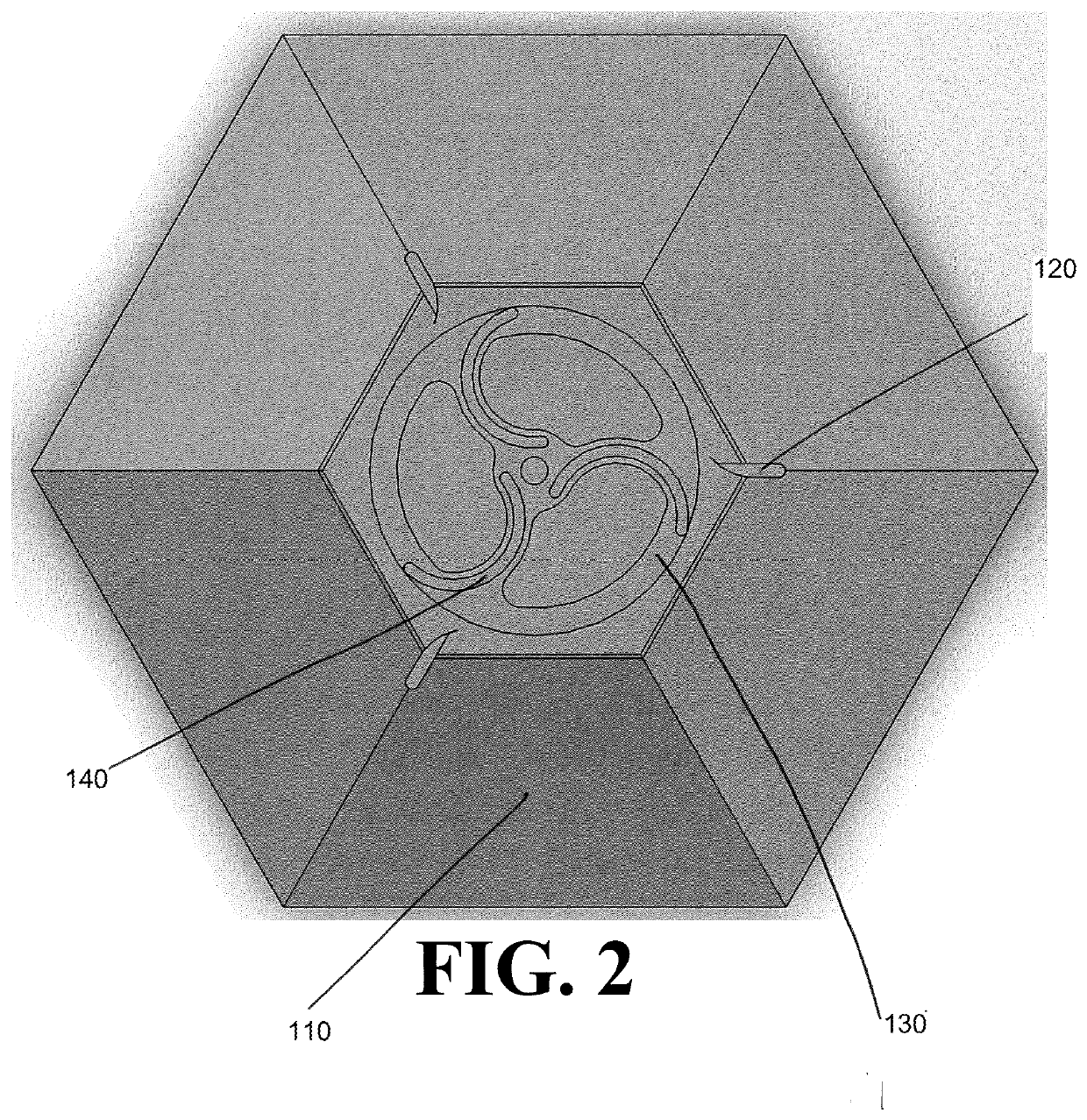Vertical axis wind turbine
a wind turbine and vertical axis technology, applied in wind motors, motors, mechanical power transmission, etc., can solve the problems of reducing the device's ability to produce power in high winds, unreliable power sources, and difficulty in building wind-driven power-generating devices that are effective and efficient under all wind conditions, so as to increase the available power, increase the wind speed, and the effect of drag and li
- Summary
- Abstract
- Description
- Claims
- Application Information
AI Technical Summary
Benefits of technology
Problems solved by technology
Method used
Image
Examples
Embodiment Construction
[0087]Referring now to FIG. 1A, a basic vertical axis wind turbine is illustrated. As illustrated in FIG. 1A, vertical axis wind turbines according to the present disclosure comprise five parts: a stator skirt 110, at least one stator fin 120, at least one rotor plate 130, at least one rotor blade 140, and a top frame 150. Additional parts may be, but need not be, present to fall within the scope of the present disclosure. The rotor blades 140 turn a shaft and are attached to the rotor plates 130 at the top, the bottom, or both of the rotor blades 140. The stator skirt 110 supports the rotor plates 130 and, as illustrated in FIG. 1A, is rotationally symmetric and comprises trapezoidal panels, with each trapezoidal panel forming an angle with respect to a horizontal axis. Thus, the stator skirt 110 has a horizontal cross-section of a regular polygon with a number of sides equal to the number of trapezoidal panels. The stator fins 120 are attached at their bottoms to the stator skirt ...
PUM
 Login to View More
Login to View More Abstract
Description
Claims
Application Information
 Login to View More
Login to View More - R&D
- Intellectual Property
- Life Sciences
- Materials
- Tech Scout
- Unparalleled Data Quality
- Higher Quality Content
- 60% Fewer Hallucinations
Browse by: Latest US Patents, China's latest patents, Technical Efficacy Thesaurus, Application Domain, Technology Topic, Popular Technical Reports.
© 2025 PatSnap. All rights reserved.Legal|Privacy policy|Modern Slavery Act Transparency Statement|Sitemap|About US| Contact US: help@patsnap.com



